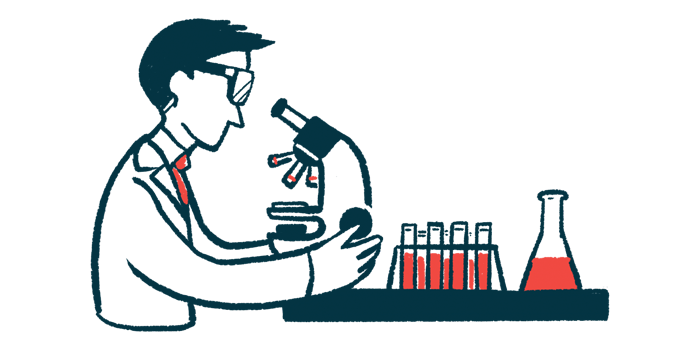Scientists map genetic mutations linked to collagen 6-related MD
Study findings could result in development of better treatments

Researchers have developed a detailed molecular model for the structure of type VI collagen and identified where genetic mutations linked to certain forms of muscular dystrophy (MD) might influence the protein.
Findings from their study could ultimately help scientists better understand the mechanisms underlying types of MD that affect collagen VI — collectively known as collagen VI-related dystrophy (COL6-RD) — and develop better treatments for them.
“This is an important step along the path of finding ways to treat these types of muscular dystrophy and will provide momentum to accelerate scientific discovery in this area,” Clair Baldock, PhD, professor at the University of Manchester in the U.K. and the study’s senior author, said in a university news story. “We hope that our structure will provide vital information to help the scientific community develop treatments, such as gene therapy, for [COL6-RD].”
The study, “Collagen VI microfibril structure reveals mechanism for molecular assembly and clustering of inherited pathogenic mutations,” was published in Nature Communications.
In COL6-RD, collagen 6 production affected by mutations
Broadly, MD is a large group of disorders characterized by progressive muscle weakness and wasting due to genetic mutations that impact muscle health.
COL6-RD, including Ullrich congenital muscular dystrophy (CMD) and Bethlem myopathy, is caused by mutations that interfere with production of type VI collagen and muscle cell stability. Affected genes can include COL6A1, COL6A2, or COL6A3. Type VI collagen is a key component of the extracellular matrix, the protein network that surrounds muscle cells and gives them structural support.
Bethlem myopathy is a mild form of COL6-RD that progresses slowly, while Ullrich CMD is more severe. Symptoms include low muscle tone, weakness, joint deformities, and breathing issues.
There are no approved disease-modifying therapies for these forms of muscular dystrophy.
Developing targeted therapies will require a better knowledge of the structure of the collagen VI protein and how disease-causing mutations affect it, according to the authors.
It’s known that collagen VI forms long fibers, or microfibrils, made up of three protein chains twisted together. It takes on an appearance much like beads on a string. Still, exactly how these fibers assemble is not totally understood.
Disease-causing mutations cluster in particular region of protein chains
In the study, scientists used an advanced technique called cryogenic-electron microscopy to get a high-resolution look at collagen VI microfibrils obtained from mammalian tissue, as well as mini-collagen VI fragments that were made in the lab.
With the power of cryogenic-electron microscopy, the scientists could “magnify collagen VI hundreds of thousands of times,” Baldock noted.
These analyses gave insight into the structure and organization of collagen VI fibers. In addition to learning more about how the protein assembles, the researchers could map which specific part of the protein is affected by various disease-causing mutations, including ones associated with Ullrich CMD and Bethlem myopathy.
“It is extremely important to understand where mutations in the tiny protein chains … are, to help in the design of future treatments,” Baldock said. “That provides an opportunity for scientists to design drugs which specifically target the mutations by focusing only on what’s broken.”
They found that a number of disease-causing mutations tended to cluster in a particular region of the collagen VI protein chains. The scientists believe they may interfere with the way these chains bond together to form a stable microfibril.
“The structure has enabled us to identify a [hot spot] for mutations … in an important region for microfibril assembly,” the researchers explained. “We expect the structure will be a valuable resource in understanding the location and impact of pathogenic [disease-causing] mutations and variants.”
Baldock noted that this team is the first to have determined the high-resolution structure of collagen VI and to map disease-causing mutations onto it.
“This provides some hope to people with muscular dystrophy that one day treatments will be available to improve their quality of life and help them to stay active and independent,” the scientist said.





